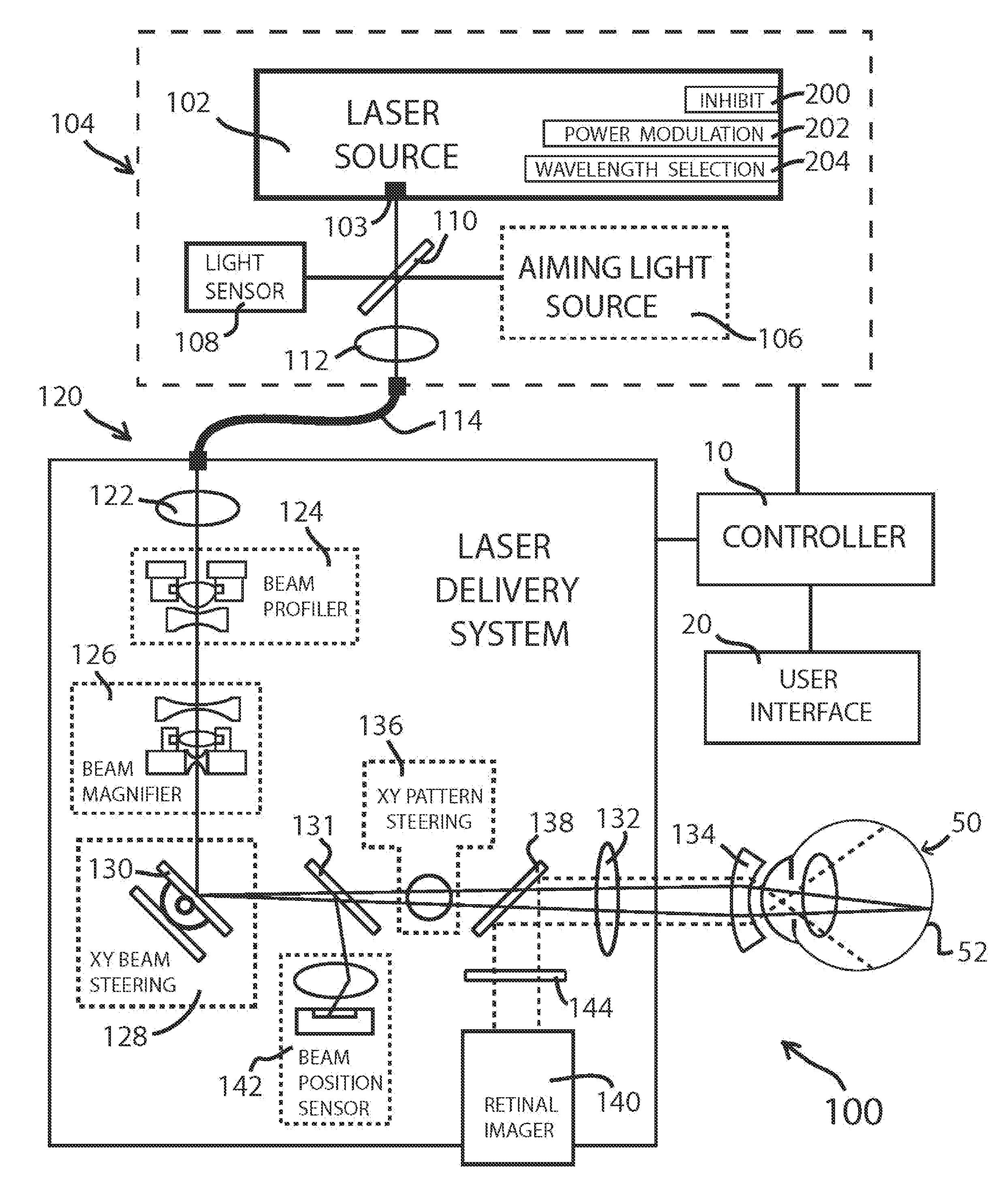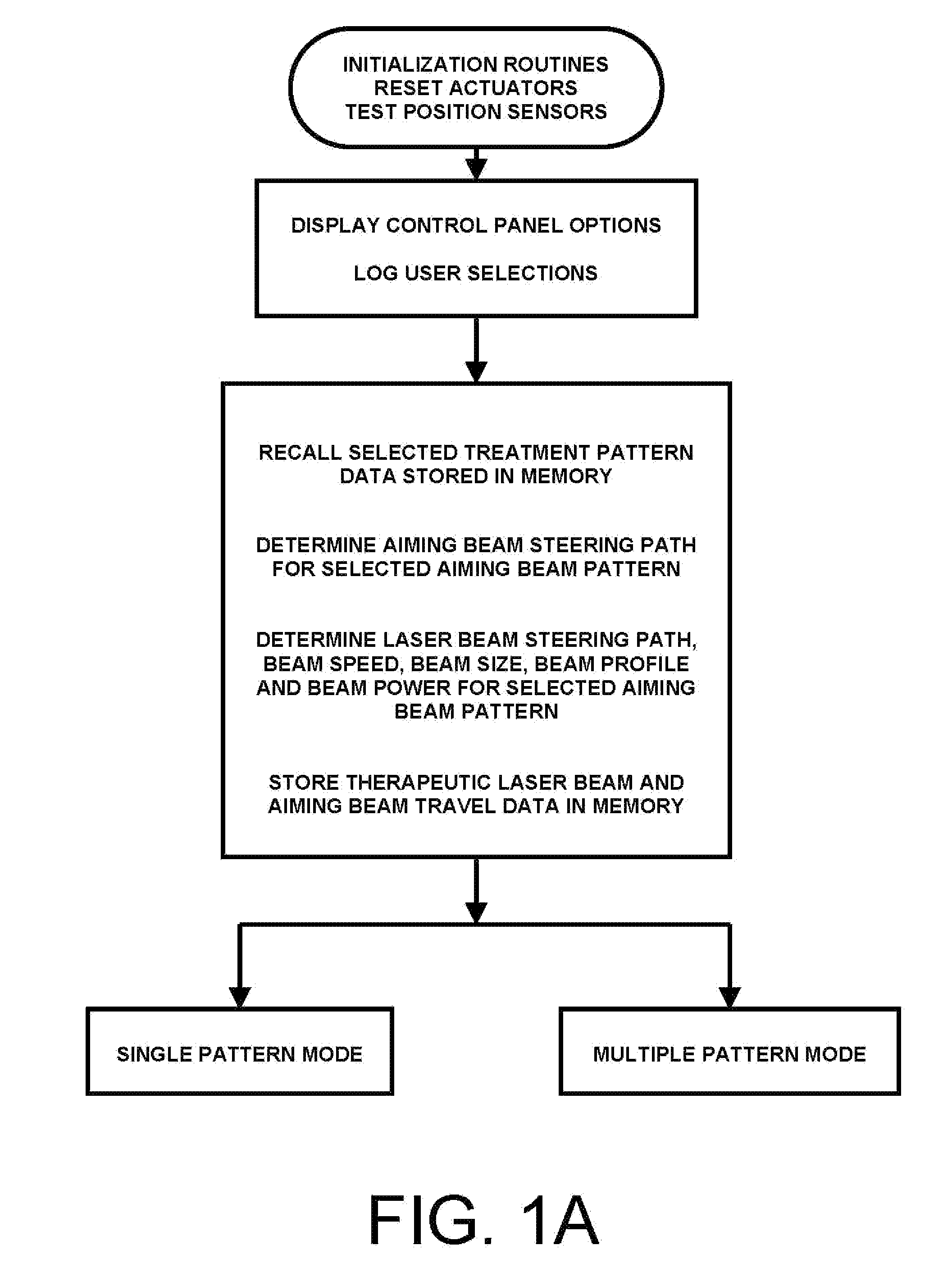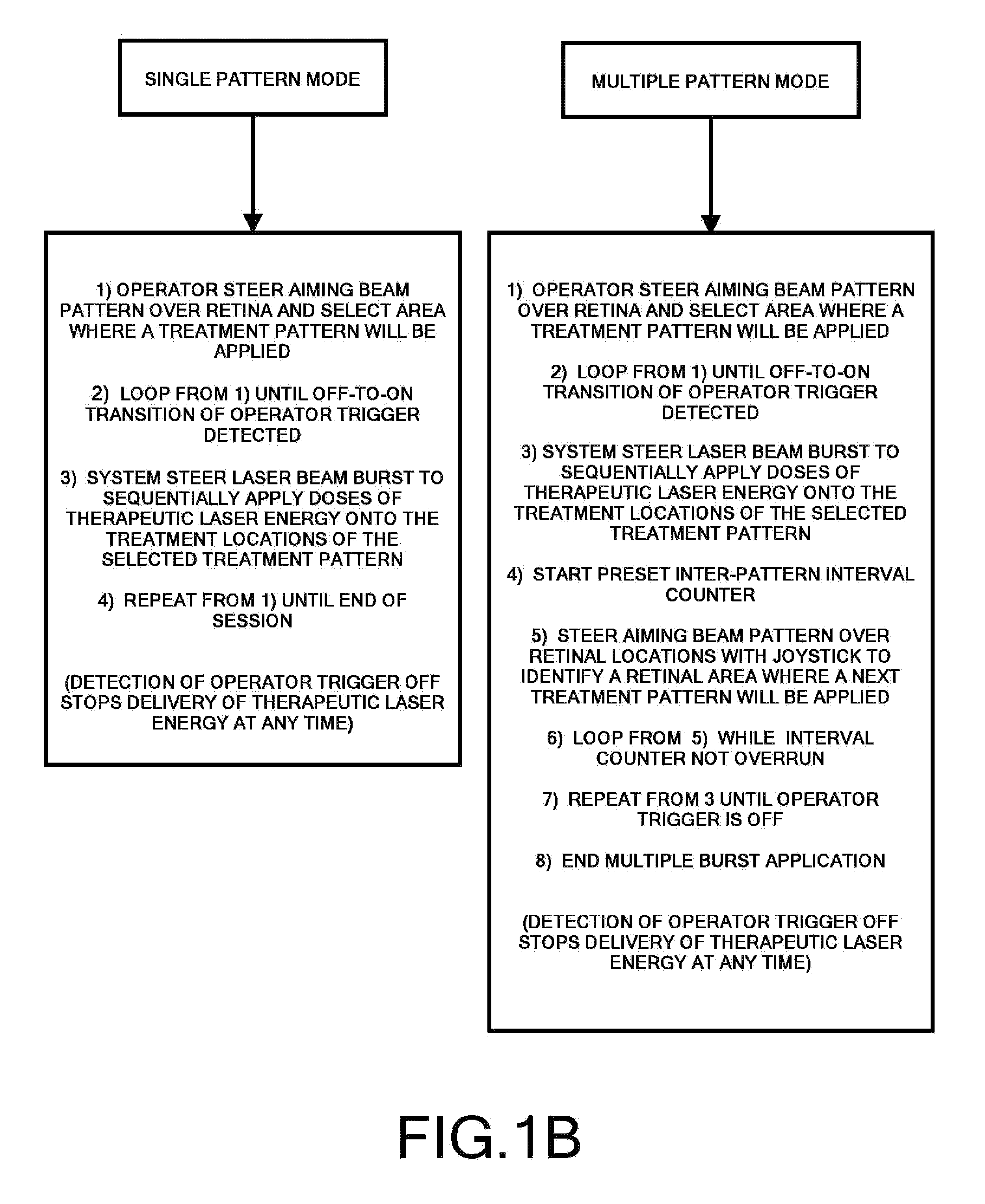Steering laser treatment system and method of use
a laser treatment and steering technology, applied in the field of retinal laser treatment, can solve the problems of insufficient time for equipment turnaround, inability to achieve total treatment time in excess of 30 minutes, and inability to achieve the effect of reducing the time required, improving efficiency, and facilitating ophthalmic operations
- Summary
- Abstract
- Description
- Claims
- Application Information
AI Technical Summary
Problems solved by technology
Method used
Image
Examples
Embodiment Construction
[0067]FIGS. 1A and 1B depict a flow diagram a method that can be practiced with the present invention. Generally speaking, the steps of this method consider setting the system for operation including making selections related to the planned treatment, having a processor / controller 10 process and store relevant data according to the operator selections, projecting an aiming beam pattern onto retinal areas, using said aiming beam pattern as a reference, selecting a treatment area of the retina where therapeutic doses of laser energy will be delivered over treatment locations disposed in the predetermined treatment pattern. The operator performs a triggering action having the system to deliver a rapid burst of modulated laser energy while rapidly steering the laser beam to obtain the desired pattern of treated locations on the retina.
[0068]The operator can adjust aspects of the selected pattern of treatment locations between applications, including repositioning, rotation, scaling, and...
PUM
 Login to View More
Login to View More Abstract
Description
Claims
Application Information
 Login to View More
Login to View More - R&D
- Intellectual Property
- Life Sciences
- Materials
- Tech Scout
- Unparalleled Data Quality
- Higher Quality Content
- 60% Fewer Hallucinations
Browse by: Latest US Patents, China's latest patents, Technical Efficacy Thesaurus, Application Domain, Technology Topic, Popular Technical Reports.
© 2025 PatSnap. All rights reserved.Legal|Privacy policy|Modern Slavery Act Transparency Statement|Sitemap|About US| Contact US: help@patsnap.com



